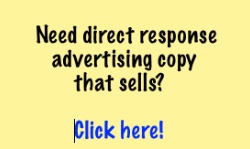I recently decided to re-read Russell Brunson’s terrific book, Dotcom Secrets. The book’s subtitle sums up its content: “The Underground Playbook for Growing Your Company Online.”
Russell is one of the whiz kids of online marketing — raking in six figures with one of his first online businesses while he was still in college.
And since then, with his two partners, he’s built a $100 million business around his ClickFunnels software, which lets you quickly and easily build sales funnels of all kinds.
One of the keys to his success is all manner of entry points into his own sales funnel, all of them leading you step by step into higher and higher priced products and services, including ClickFunnels.
Dotcom Secrets is one of those entry points. You can buy it on Amazon for $11.97, but Russell would rather give you a “free” copy for just $7.95 shipping and handling.
That way, he can add you to one of his sales funnels, where the attempts to sell you more good stuff via email begins in earnest.
If you want an education in marketing — and much of it applies in the offline world, as well — you can’t do much better than studying everything Russell writes and everything he does in his business.
A big part of Russell’s magic is his remarkable story-telling ability. And how he weaves stories from his own business or a client’s business into the lessons he teaches. Those stories illustrate the points he wants to make marvelously — and help make those points more memorable.
The first important lesson in Dotcom Secrets revolves around something I’ve discussed before: identifying your ideal clients and doing business only with them, instead of taking on every Tom, Dick or Harriet who wanders through your doors.
And he teaches that lesson with a story from his own life, and how even though he had built a profitable and successful business, he was miserable. As he puts it, he felt “tired, frustrated and empty.”
Why? Because he was dealing with people he didn’t want to deal with… teaching things he didn’t want to teach… and, most importantly, was unable to help these clients at a high level because too many of them simply couldn’t afford what he wanted to offer.
So he decided to make a change… to identify his dream clients… and to seek out ways to find and attract them, so he could use his online marketing and funnel building magic to help them grow their businesses.
Step one for Russell was identifying just who that dream client was. Interestingly, he wasn’t content with vague and hazy generalities. Instead, he got very specific.
He wrote down what he thought they might look like, what they’d be passionate about, what dreams and goals they had, the size of their business and a few other factors.
He even went so far as to give them names: Mike for the men… Julie for the women. And then he found images online to represent each of them.
A little weird? Perhaps. A tad over-the-top? Maybe. But I’m betting that this attention to detail, coupled with Russell’s desire to really hone in on who would best benefit from his products and services, goes a long way to explaining why he has succeeded so spectacularly while still in his 30s.
In any case, it certainly can’t hurt for you to identify your ideal customer. It’s something I need to do more of myself. And once we know who they are, we can figure out where to find them and how to attract them. More on that in future emails.

